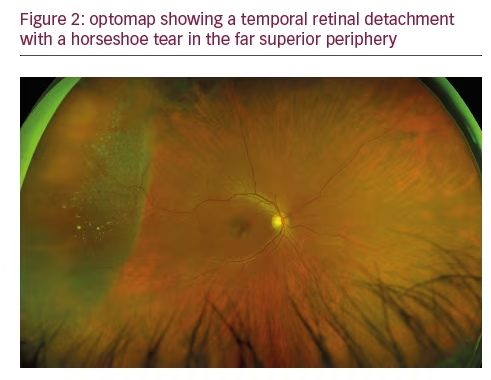

If you are experiencing floaters and/or flashes, please contact Brooks Eye Associates today or call (972) 736-9347 to schedule an appointment with our experienced Dallas ophthalmologist Dr. A sudden increase in floaters and flashes, or a black shadow/curtain moving across your vision can indicate the onset of retinal detachment, which must be treated immediately in order to preserve your vision. If you have recently experienced PVD, pay close attention to your symptoms for any significant changes. If your vitreous layer tears the retina when it detaches, this tear can worsen and become a retinal detachment. Sometimes, the sticker will come away cleanly, but in other cases, it tears off some of the underlying paper in the process. Think of vitreous detachment as a sticker being pulled off of an envelope. In some cases, this can happen directly after a vitreous detachment. Retinal detachment occurs when your retina is lifted away from its normal position at the back wall of your eye. As long as the fibers are merely pulling on the retina, the quality of your eyesight should not be affected. The main difference between a vitreous detachment and retinal detachment is the damage done to the retina. PVD is a normal age-related phenomenon, but it can potentially lead to a retinal detachment in the future and should be carefully monitored for that reason. This can cause floaters and flashes to appear more frequently in your vision.
Retinal detachment optomap skin#
Current research is also showing that ocular melanoma is very different from normal skin melanoma.Posterior vitreous detachment (PVD) occurs when the fibers in your eye’s vitreous layer shrink and condense, causing the vitreous gel to pull on the retina’s surface. Other sites include ciliary body, iris, and conjunctiva. Choroidal melanomas are the most common site comprising 85% of cases. There are other types of eye cancers, but melanoma is the most common. Ocular melanoma is often lethal, but thankfully, a very rare disease. Increased pressure can result in changes to blood vessels in the eye, increasing the risk of cardiovascular disease (stroke or heart disease). Glaucoma causes damage to the optic nerve and almost always develops without symptoms. The results in alterations to our fine central vision making daily activities difficult. The center of the retina (the macula) can become diseased when we get older. The longer retinal detachment goes untreated, the greater. Retinal detachment separates the retinal cells from the layer of blood vessels that provides oxygen and nourishment to the eye. Retinopathy occurs when diabetes damages the tiny blood vessels inside the retina. Retinal detachment describes an emergency situation in which a thin layer of tissue (the retina) at the back of the eye pulls away from its normal position. Early detection is essential so treatments can be administered.ĭiabetes affects the eyes and the kidneys and is a leading cause of blindness. This means, in addition to eye conditions, signs of other diseases (such as stroke, heart disease, hypertension and diabetes) can also be seen in the retina. The Optomap story: In 1990, 5 year old Leif Anderson went blind in one eye due to an undiagnosed retinal detachment. Your retina is the only place in the body where blood vessels can be seen directly. In this type, fluid leaks into the area underneath the retina (subretina).Įarly detection of all of these diseases and conditions mean successful treatments can be administered which reduces the risk to your sight and health. This type of detachment is less common.Įxudative – Frequently caused by retinal diseases, including inflammatory disorders and injury/trauma to the eye. Tractional – In this type of detachment, scar tissue on the retina’s surface contracts and causes it to separate from the RPE. These types of retinal detachments are the most common. Rhegmatogenous – A tear or break in the retina causes it to separate from the retinal pigment epithelium (RPE), the pigmented cell layer that nourishes the retina, and fill with fluid. What are the different types of retinal detachments? Anyone can get a retinal detachment however, they are far more common in nearsighted people, those over 50, those who have had significant eye injuries, and those with a family history of retinal detachments. If not promptly treated, a retinal detachment can cause permanent vision loss.

When the retina detaches, it is lifted or pulled from its normal position. Retinal detachment describes an emergency situation in which a thin layer of tissue (the retina) at the back of the eye pulls away from its normal position.


 0 kommentar(er)
0 kommentar(er)
